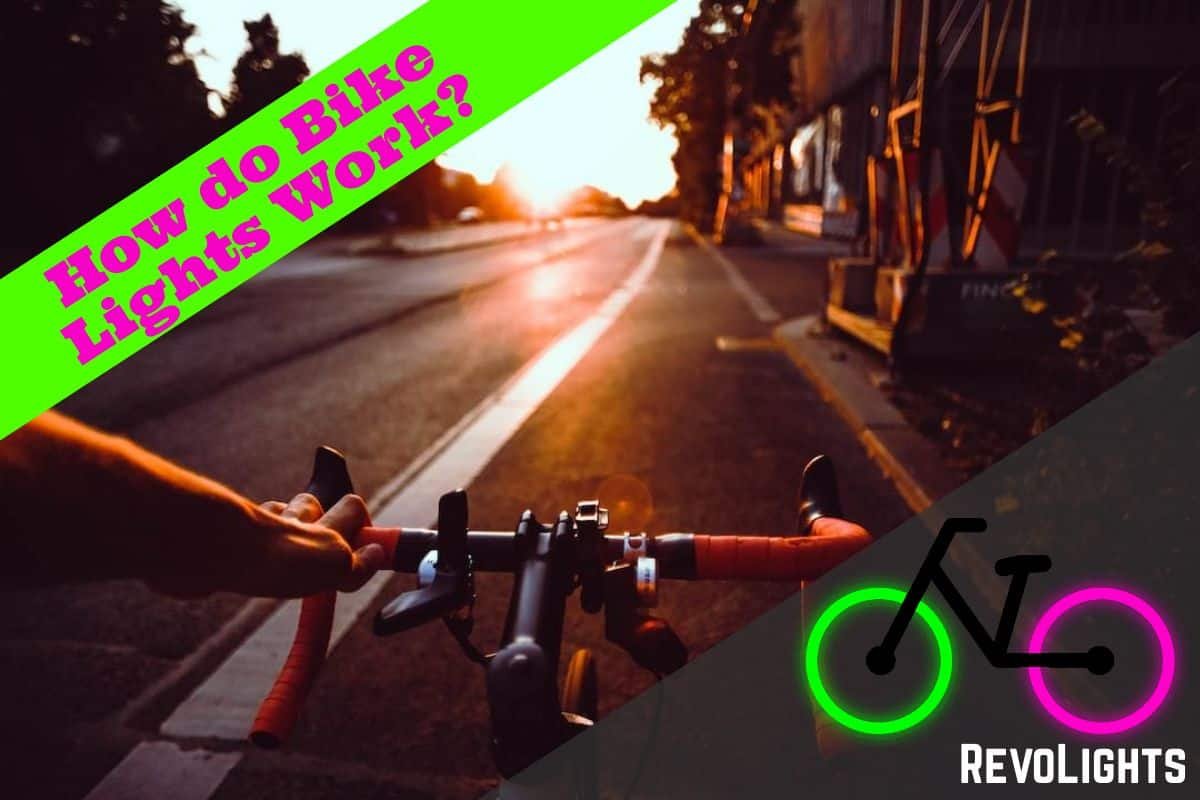No cyclist should ever go out on the street at night without a bike light. While some bikes come with a front headlight, not all of them do. Also, sometimes these lights don’t give off a lot of light, so cyclists often opt to add additional lights or reflectors to the front and back wheels.

Some cyclists pair these lights with illuminated strips on their clothing.
When considering what types of lights to purchase for your bike, you will need to determine how much light you need them to illuminate, and what type of power supply they require.
Choosing the Best Light for Your Bike?
Adding bike lights and reflectors to your bike is one of the most important things you can do to ensure your bike is safe on the road. It helps the cyclist be seen by cars, pedestrians, and other cyclists and well as helps light the path for the cyclists so they can avoid potholes or big stones in the road.
There are many different types of bike lights to choose from including:
- Wheel lights
- Handlebar lights
- Helmet lights
There are also bike lights that create a solid light and those that blink or create patterns when a certain speed is achieved.
How do Bike Lights Work?
Since bikes are on the road with no available electricity, they need to derive their power from somewhere, but where?
One of the most common types of bike lights are those that run on AA or AAA batteries, but these often don’t last more than 15-20 hours and many high-lumen lights will drain the battery faster than that.
Battery-Free Bicycle Lights:
According to BikeHike.org, some lights work on a system that illuminates the light when the wheel rotates. This creates the energy the power source needs to light the cyclists’ route. It works as a generator of sorts. As long as the cyclist is riding and the wheel is turning, the light will remain on. When they stop riding and the wheel rotation stops, the light will go out.
SportsRec.com adds that the faster the cyclist goes, the stronger the light will become. Cyclists that are ending their ride and cycling slowly may find that their light is very dim. This may also be the situation with new cyclists that don’t ride very fast and are casual riders.
Battery-Operated Bicycle Lights:
There are a couple of different types of battery-operated bike lights. The traditional type of lights operates on battery power. Most frequently they will take three or four AA or AAA batteries. The higher the light lumens, the more power they will need to keep the lights illuminated. This will draw power from the batteries.
For avid night cyclists, this may mean you will need a stash of batteries to keep your bike light at full power.
Today, more and more bike lights gain their power from a USB power source when not in use. This is especially good if the battery is easy to put on and take off the bike to keep it fully charged. Of course, if you forget the device on the bike, you may find that you are out of juice the next time you want to take the bike out for an evening spin.
Rechargeable batteries are another source for powering bike lights. Today, more and more bike lights are being sold with rechargeable batteries. As soon as the light begins to dim, the lights can be recharged so that the cyclist will always have a light. Many opt to purchase extra rechargeable batteries so they always have a fresh set ready to go for their next ride.
What is the Best Option:
Each cyclist has their favorite lighting option or options, as many cyclists have a helmet or handlebar light. These are great for lighting the cyclists’ paths so they can see road conditions ahead of time and avoid road hazards.
« Are Light Bulbs the Same in Europe? Uncover Essential Differences & Tips
Best Bike Lights for Aero Bars »
In addition, some also opt for rear and front wheel lights that help cars see the bikes in the bike lane or roadway. So, many bikers choose more than one type of light before they hit the roadways.
When it comes to cost, the least expensive options are lights that have batteries that are rechargeable or can be charged with a USA port. They will not need to frequently replace those batteries, which is the case with battery-operated lights.
Another great option is lights that are generated by the movement of the tire, battery-free lights.
Many of these options depend on what the cyclist prefers and how much light they produce.
Keeping Your Bike Safe on The Road with Lighting:
Bikers, pedestrians, motorcyclists, truckers, and cars all need to be aware of what is around them when they are using the roadways.
According to InjuryFacts.nsc.org, the National Center for Health Statistics reports that in 2020 deaths from bike riding increased by 16%. From 2011 to 2020, bike deaths increased by 44%; going from 873 to 1,260.
Most cycling accidents occur in the warmer months, from May until October, with the most being in August, and the fewest in February. We can attribute this to the fact that many parts of the nation experience snow in the winter, reducing the number of those using their bikes for transportation.
There are many things that cyclists need to do to be safe while sharing the road. They should always wear a helmet and protective gear, with long sleeves and pants to protect them from unexpected falls. They should also be sure to have bike lights on the front of their belt or attached to their helmet so they can safely see what is in front of them.
They should also have lights that illuminate the bike so that others sharing the roadways can easily see the cyclists before they pass them.
Enjoy biking, but stay safe with illuminated bikes.




